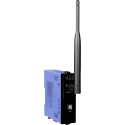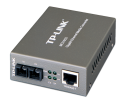Managed and unmanaged switches
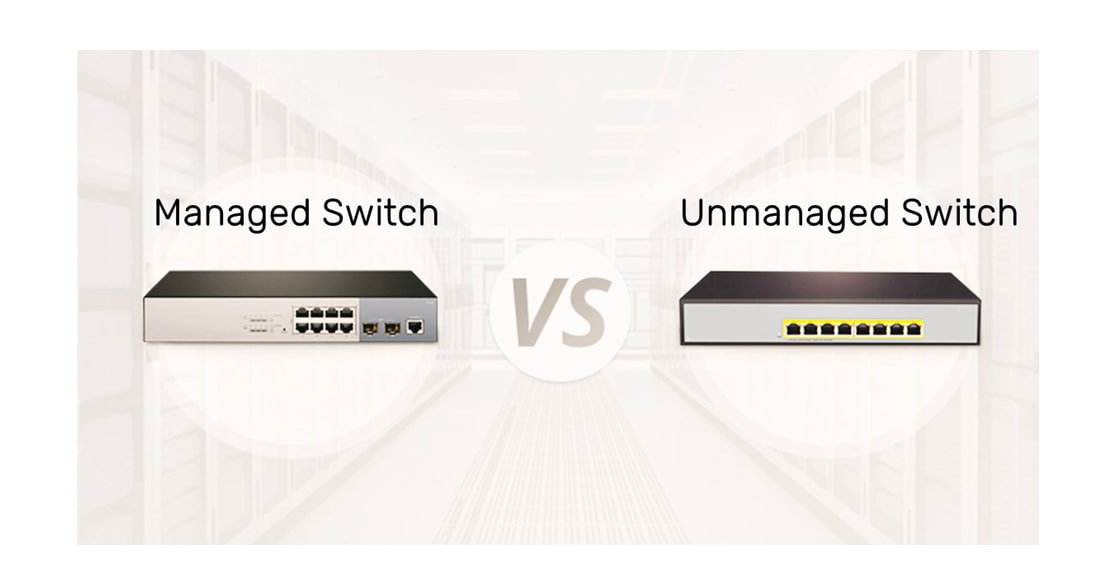
Content:
- Definition of switches
- Differences between switches and routers
- Unmanaged switches
- Managed switches
- Comparative analysis
- CTC UNION and Planet switches comparison table
- Conclusion
Switches are vital in modern networks, ensuring efficient data transmission between devices in a local area network (LAN). In this article, we will explore the role of switches in network infrastructures, compare them with other network devices such as routers, and examine the differences and features of unmanaged and managed switches.
Definition of a switch
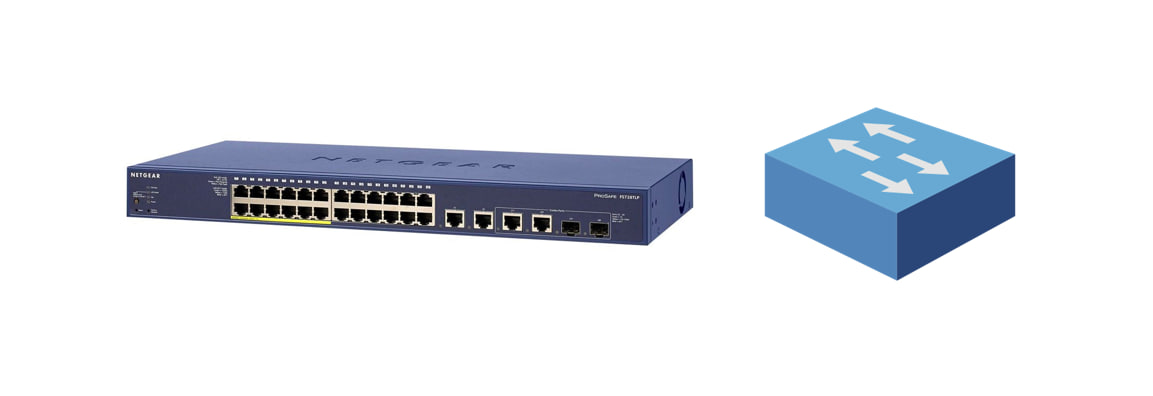
A switch is designed to connect multiple devices in a local area network (LAN), facilitating data transmission between them. As the number of connected devices in a network increases, creating separate LANs becomes necessary. Special devices such as repeaters, hubs, routers, and, of course, switches are used to connect different LANs. The use of repeaters, typical for simple network architectures, ensures the transmission of an exact copy of the signal at the output. However, when the network branches, a repeater cannot determine the direction of further data transmission, which can lead to inefficient use of network resources and an increased risk of collisions. Hubs, operating at the physical level, Layer 1 of the OSI model, also do not provide logical data processing and protection of the network infrastructure.

Unlike repeaters and hubs, Switches operate at a higher level of the OSI model (Data Link, Layer 2) and provide physical addressing. Each message sent in the local network contains information about its source and destination, allowing switches to route data only to the necessary devices efficiently. By using a switching table that stores mappings of switch ports and MAC addresses of devices, switches ensure accurate data delivery in the local network. Thus, switches play a key role in ensuring the efficient operation of local networks, providing high bandwidth, security, and stability of data transmission.
Differences between switches and routers

An example of an unmanaged media converter is the "RUGGEDCOM-RMC41"
At the network level of the OSI model (Layer 3) are routers, which operate using logical addressing (IP) to determine the direction of data transmission. This allows them to route packets outside the local network, reaching any device on the Internet. Compared to switches, routers are more complex devices. They store routing schemes, and constantly exchange information about traffic routes and network status with other routers, even while processing network traffic between servers and end-user devices. It should be noted that switches and routers use different methods of addressing data (MAC addresses and IP addresses, respectively). Unlike switches, routers have a complex operating system with the ability to configure site filtering, traffic limitation, and many other parameters. Routers also have access to the Internet, while switches do not have this capability. Additionally, routers are usually equipped with both LAN and WAN ports, allowing them to function as gateways between networks. Switches, on the other hand, are used to create local area networks (LANs) and typically only have LAN ports. They are most commonly found in enterprises where a large number of devices need to be connected to the network. Routers are commonly used in home networks where Internet access and routing between networks are required.Unmanaged switches
Switches are divided into two main categories: unmanaged and managed. Unmanaged switches transmit data regardless of user actions. They have moderate performance, but the main advantage of unmanaged switches is their simplicity in installation and use. They do not require complex configuration, have lower power consumption, generate less heat, and are easily replaced if they fail. Such switches are usually used in networks with a smaller number of connected devices, such as home or small corporate networks. They can also be useful in dedicated networks (e.g., video surveillance cameras) where access needs to be restricted for various reasons. However, due to their simplicity, unmanaged switches have their drawbacks, including limited management features, lack of scalability and security vulnerabilities.
Managed switches
Managed switches provide high bandwidth and offer user management capabilities, significantly expanding network administration capabilities. They support features such as the Link Aggregation Control Protocol (LACP), which allows for the aggregation of physical communication channels to increase bandwidth, and provide redundancy by offering alternative paths for traffic in case of failure. Managed switches ensure a high level of network security by allowing the disabling of unused ports, user authentication, packet filtering, and the use of Spanning Tree Protocol (STP) to protect against network errors. They also provide the ability for remote rebooting or shutdown, which can be useful in the event of network attacks. Furthermore, managed switches support features such as channel aggregation and Virtual Local Area Networks (VLANs), making them a great choice for corporate networks and networks with high traffic volumes.
Comparative analysis
The main difference between unmanaged and managed switches lies in their management capabilities, network security features, performance and other aspects. Below is a comparison table of unmanaged and managed switches.
|
|
Unmanaged switches | Managed switches |
| Performance | Fixed configuration and lower performance when handling large volumes of traffic or complex network tasks | Higher performance in traffic handling and executing complex network functions |
| Flexibility | May be limiting when complex network configuration is required | Provide greater flexibility for network management, configuration, and control |
| Security | Limited capabilities for enhancing security | Provide options for authentication, access control, etc. |
| Ease of use | Simple and reliable to use, do not require pre-configuration | Require specialized knowledge and time for setup and management |
| Reliability | May be more reliable due to the absence of complex settings that can lead to errors or incorrect configuration | May be less reliable due to the possibility of errors in settings or incorrect configuration |
| Throughput | Limited by port standards (usually Fast Ethernet or Gigabit Ethernet) | Can support higher standards, such as 10 Gigabit Ethernet |
| Power consumption | Typically consume less power due to simpler architecture | Can consume more power due to more powerful components and additional features, such as Power over Ethernet (PoE) |
Taking into account all the criteria and advantages of each type of switch, let's compare two representatives of each type, namely the CTC Union IGS-404SM Managed Gigabit Ethernet Switch and the Planet IGS-620TF Unmanaged Ethernet Switch, as presented on our website.
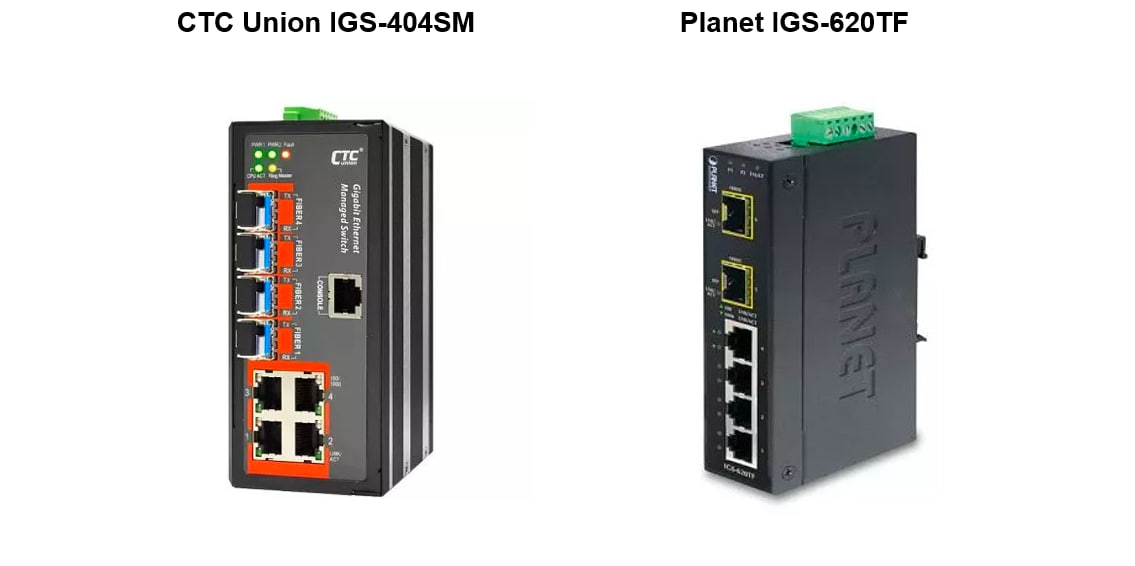
|
|
CTC Union IGS-404SM | Planet IGS-620TF |
| Type | Managed | Unmanaged |
| Ports |
|
|
| Supported protocols |
|
|
| System power Input |
|
|
| Operating temperature | -10..60 °C | -40..75 °C |
In summary, it can be said that:
- The CTC Union IGS-404SM provides a wider range of management protocols, which can be useful for remote network management and monitoring, as well as a broader range of security protocols, which are important for network security. The Planet IGS-620TF, on the other hand, offers more specific IEEE standards, which can be important for compatibility with other equipment.
- Both switches support Ethernet ports with speeds of 10/100/1000 Mbps, providing flexibility when connecting devices of different speeds. The CTC Union IGS-404SM has fewer total Ethernet ports (4 compared to 6 on the Planet IGS-620TF), but both switches provide an adequate number of ports for small and medium- sized networks.
- The CTC Union IGS-404SM has more SFP ports (4 compared to 2 on the Planet IGS-620TF), which can be useful for connecting to devices with optical interfaces or for creating aggregated channels.
- The CTC Union IGS-404SM has a wide range of DC input voltage (9-60 V), which can be useful for connecting to various power sources.
- The Planet IGS-620TF supports both DC (12-48 V) and AC (24 V) input voltage, which can be convenient in different usage scenarios.
- Both switches support backup power, providing additional reliability in case of failure of the main power source.
- The Planet IGS-620TF has a wider operating temperature range (-40..75 °C), which allows it to be used in more extreme conditions, such as high temperatures or cold climates. The CTC Union IGS-404SM has a narrower range of operating temperatures, but it may be sufficient for the environment of most office and enterprise networks.
Conclusion
The choice between unmanaged and managed switches depends on the requirements and characteristics of the network. Both types of switches have their advantages and disadvantages, and it is important to choose the most suitable option based on the specific needs of the network. When making a choice, factors such as the location of the switches, the number of users or devices, and the need to control network traffic or configure the network should be considered.
